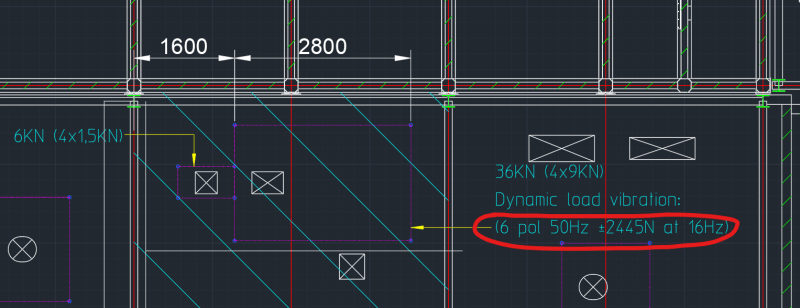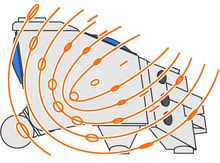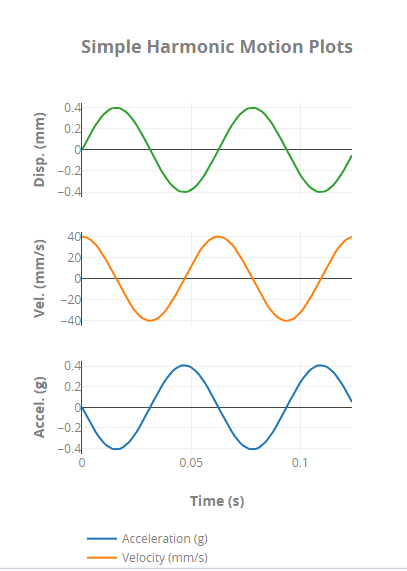nivoo_boss
Structural
- Jul 15, 2021
- 132
Hey everyone!
So I'm designing a factory that has a vibrating equipment on one floor. The load is given like this:

Do you have any thoughts what that "6 pol" might mean?
I'm not too familiar with dynamic analysis but am trying to educate myself a little in Robot Structural Analysis.
So I'm designing a factory that has a vibrating equipment on one floor. The load is given like this:

Do you have any thoughts what that "6 pol" might mean?
I'm not too familiar with dynamic analysis but am trying to educate myself a little in Robot Structural Analysis.

![[smile] [smile] [smile]](/data/assets/smilies/smile.gif) .
.

![[pipe] [pipe] [pipe]](/data/assets/smilies/pipe.gif)
![[thumbsup2] [thumbsup2] [thumbsup2]](/data/assets/smilies/thumbsup2.gif) In that aspect I've never dealt in any depth with walking induced vibrations. The only depth I've gone too is "basic rules of thumb" based on deflection limits and a few experiences where I've directly felt the discomfort of excessive deflection in a couple of my own designs and learnt from that. (One advantage of design and construct experience IMO, is you can readily experience and if necessary fix any design shortcomings regarding serviceability.)
In that aspect I've never dealt in any depth with walking induced vibrations. The only depth I've gone too is "basic rules of thumb" based on deflection limits and a few experiences where I've directly felt the discomfort of excessive deflection in a couple of my own designs and learnt from that. (One advantage of design and construct experience IMO, is you can readily experience and if necessary fix any design shortcomings regarding serviceability.)